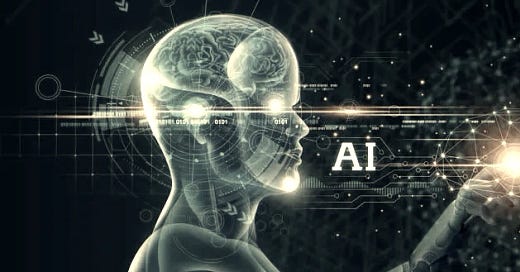"The best way to predict the future is to create it." - Peter Drucker
In our last post, we explored the fascinating world of Machine Learning and how AI "learns" from data. Now that we understand the learning process, let's look at the incredible range of tasks AI is capable of performing today. You might be surprised by how much AI already touches your life!
Categorizing AI's Superpowers
AI excels at a variety of tasks that fall into a few major categories. It's important to remember that AI typically augments, rather than completely substitutes, human effort, making us more efficient and effective.
1. Generative AI: Creating New Content
What it does: This is currently the most buzz-worthy type of AI. It generates new text, images, audio, video, and even code.
Examples:
Text: Writing emails, essays, marketing copy, poems, articles. (e.g., ChatGPT, Gemini, Claude, Llama)
Images: Creating unique artwork, realistic photos, or design concepts from text descriptions. (e.g., DALL-E, Midjourney, Stable Diffusion)
Computer code generation: Generating programming code snippets or entire functions for software developers.(e.g., Cursor, Microsoft Copilot)
How you might use it: Drafting initial documents, sparking creative ideas, creating visuals for presentations, generating computer code.
In the coming lessons, we will mainly focus around Generative AI and its use-cases.
2. Predictive AI: Forecasting and Recommendations
What it does: Analyzes historical data to make predictions about future events or recommend items.
Examples:
Weather forecasting: Predicting future weather patterns.
Stock market predictions: Forecasting stock prices (with varying accuracy!).
Product recommendations: Suggesting what you might like on Amazon or Netflix.
Credit scoring: Assessing creditworthiness for loans.
How you might use it: Personalizing experiences, making data-driven decisions.
3. Computer Vision: "Seeing" and Understanding Images
What it does: Enables computers to "see" and interpret visual information from images and videos.
Examples:
Facial recognition: Unlocking your phone, identifying people in photos.
Self-driving cars: Recognizing traffic signs, pedestrians, and other vehicles.
Medical imaging analysis: Helping doctors detect diseases in X-rays or MRI scans.
How you might use it: Organizing photo libraries, enhancing security systems.
4. Natural Language Processing (NLP): Understanding and Using Language
What it does: Allows computers to understand, interpret, and generate human language. (Generative AI for text is an advanced form of NLP!)
Examples:
Spam filters: Identifying junk email.
Sentiment analysis: Determining if text is positive, negative, or neutral (e.g., analyzing customer reviews).
Translation: Converting text or speech from one language to another.
Chatbots: Understanding your questions and providing answers.
How you might use it: Summarizing long documents, improving customer service, translating conversations.
5. Robotics and Automation: Physical and Digital Task Execution
What it does: AI can power physical robots to perform tasks in the real world, and digital "bots" to automate software processes.
Examples:
Factory robots: Assembling products on a production line.
Robotic surgery: Assisting doctors with precision operations.
Robotic Process Automation (RPA): Automating repetitive digital tasks like data entry or invoice processing.
How you might use it: Streamlining manufacturing, automating office tasks.
From creating art to driving cars, AI is constantly expanding its capabilities. Understanding these core functions helps you identify opportunities to use AI to augment your own work in your daily life and work.
In a later lesson, we will also look into areas where AI still has limitations or is unlikely to get good at soon, such as human-level critical thinking, empathy, cultural and geo-political awareness among others.
Practice Exercise
Think about a task you do regularly at work or home. Which of the AI superpowers discussed (Generative, Predictive, Computer Vision, NLP, Robotics/Automation) could potentially help you with that task? Give a specific example.
Fun Fact
AI is now being used to design new medicines and materials! By rapidly analyzing millions of molecular combinations, AI can suggest novel compounds and materials that would take humans years to discover.
Learning Reinforcement Questions
Which type of AI is known for creating new content like text and images?
Predictive AI.
Computer Vision.
Generative AI.
Robotics AI.
What is the primary function of Predictive AI?
Give an example of Natural Language Processing (NLP) in action.
True or False: Computer Vision helps self-driving cars "see" the road.
Name one way you could use Generative AI in your daily life.
Once you've given it a shot, you can find the <guidelines to answering these questions here> to check your understanding.
Next up
In our next lesson, Lesson 5-a: Crafting Your First Strong Prompt, we will focus on creating effective messages(prompts) that direct Generative AI to do useful work for you. Mastering the language of communicating with AI is an essential skill and can help you achieve higher levels of efficiency and productivity in your daily tasks.
Licensing, Attribution and Commercial use
© 2025 Nacha – AI Activation Hub, a division of Asset Thinking Ltd. All rights reserved.
For commercial licensing, partnerships, adaptations, integrations, usage within an organization or consulting inquiries, please contact the author via email: zack@nacha.life



Informative